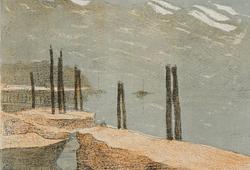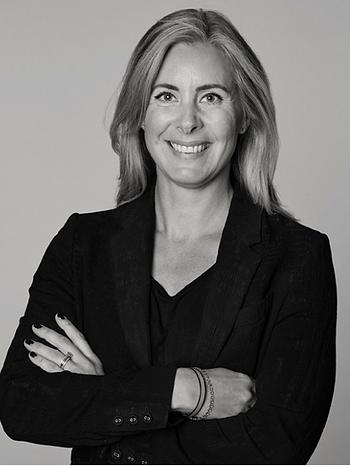Karin Mamma Andersson
"Childhood"
Executed 2010, later signed Mamma Andersson and dated 2011 on verso. Acrylic and oil on panel 81 x 123 cm.
Provenance
Acquired directly from the artist by the present owner.
Exhibitions
Aspen Art Museum, Aspen, USA, "Mamma Andersson", 10 December 2010 - 6 February 2011.
Sven-Harrys Konstmuseum, Stockholm, Sweden, "(7) Grant recipients", 18 June - 28 August 2011.
Kunstmuseen Krefeld, Germany, "Dog Days", 23 October 2011 - 5 February 2012.
Literature
Elfriede Jelinek, Martin Hentschel, Mamma Andersson, "Karin Mamma Andersson: Dog Days", 2012, text edition, mentioned.
Elfriede Jelinek, Martin Hentschel, "Mamma Andersson: Dog Days", 2012, illustrated p. 79.
More information
The typical empty rooms in Karin Mamma Andersson’s art works, here a depiction of an apparently entirely ordinary nursery, turn out to be places infested with loneliness and destruction. Her world is constantly expanding, the pictures open out and we understand that the room is the way in to something much bigger.
Elfriede Jelinek wrote the following in “Karin Mamma Andersson: Dog Days”, 2012:
“An ordinary nursery, there are toys on the chest of drawers, building blocks spread across the floor. In the middle of them there is a tower of four large cylinders, we see a counterpart to this in the basket chair with two round cushions on top of each other – the remains of a children’s game. At first glance, the subject seems to be filled with the weariness that Mamma Andersson so appreciates – if it weren’t for the unique coloration that makes the whole thing look gloomy while yet deriving from a secretive charge. The floor is painted completely black, a grisly black without any limits, almost bottomless. Even the tops of some of the building blocks are coloured like this. Another detail that attracts attention is that the upper edge of the second of the cylindrical building blocks, stacked in a tower, creates an exact line with the edge of the floor. What is actually anathema in depicting spaces here becomes an indication of captivity. This insignificant detail takes the sense of space back to the surface of the picture.”
Karin Mamma Andersson is one of Sweden’s most appreciated contemporary artists. She made her international breakthrough at the Venice Biennale in 2003 and today is represented by a number of galleries. In 2006 she won first prize in the Carnegie Art Award and the following year saw her first separate exhibition at Stockholm’s Moderna Museet, which then toured to Helsinki and London. This laid a solid foundation for Andersson’s continued career.
Karin Mamma Andersson once said that she likes theatre but she prefers it without actors. And in her paintings we often see empty rooms, or deserted landscapes. We gain a sense of something having already happened, or being about to happen. Andersson does not beautify her interiors; these are places for living in. Creative disorder. The drawers of the chest of drawers are open, there are wooden blocks on the floor, the rug is rumpled on the linoleum floor.
“Childhood” was exhibited at the Aspen Art Museum, 2010, in Karin Mamma Andersson’s first individual exhibition at a museum in the USA. In the following year it was part of Sven-Harrys Art Museum’s exhibition ”Sju Stipendiater”, before then touring Germany with the separate exhibition “Dog Days” at Kunstmuseen Krefeld.





























